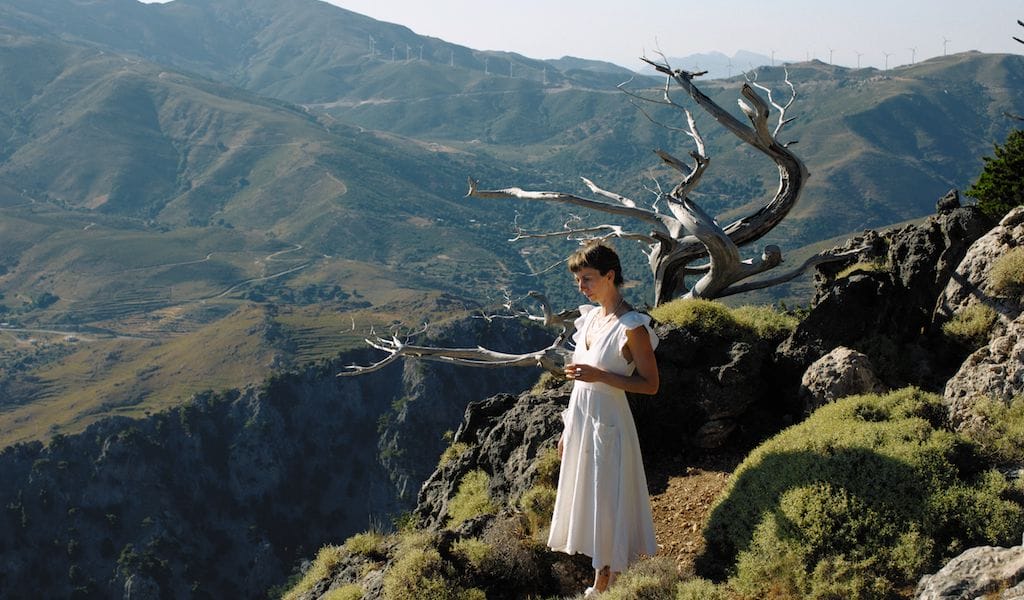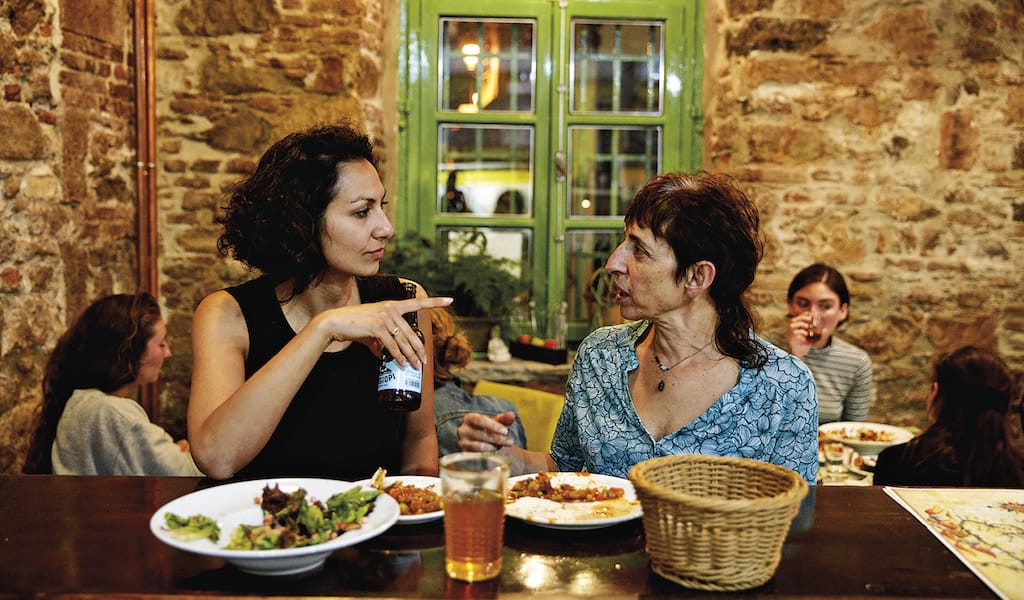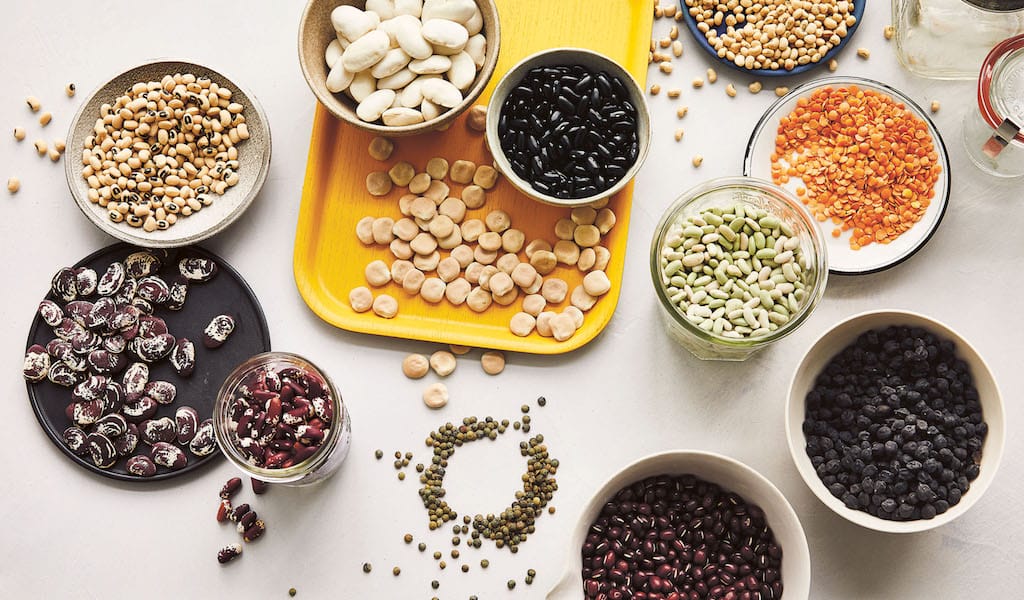We recently spoke to Marianna Leivaditaki about her cookbook, Aegean: Recipes from the Mountains to the Sea (Kyle Books, September 2020), which delves into the cuisine of Crete, the largest island in Greece and one of its most distinct.
Marianna grew up on Crete, where her father was a fisherman and her mother ran the family’s restaurant, before later settling in the UK – she’s now the head chef at Morito Hackney Road in London. A skilled storyteller, she weaves an enveloping portrait of life on the island, which is simple but simultaneously rich, and presents its cuisine through a personal lens. The end result is a transporting love letter to Crete, an island with so much to give.
We spoke about how this book came about, how her perspective on the island has changed over the years and cooking Cretan food outside of Crete. Below is a condensed and lightly edited transcript of our conversation. Marianna was also kind enough to share her recipe for prawns with ouzo, orzo and courgette.
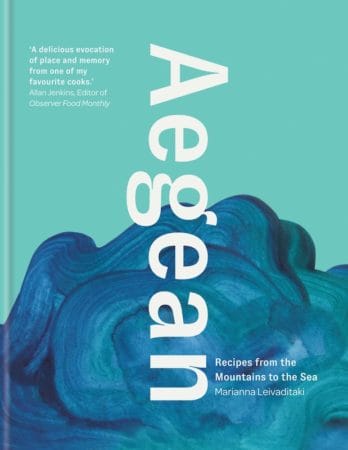 How did this book come about?
How did this book come about?
The honest truth is that the publishers emailed me one day and said, we’d love to meet you, we’ve read everything you’ve written in newspapers, and we think that you’d write a great book.
That was the actual turn of the key, but I had been writing for many years. I wanted to write a book, but I wasn’t sure what it was going to be. What I knew for certain is that I loved writing. I love putting down memories or thoughts, and I’ve always done it since I was a kid, whether it was writing down recipes or whether it was my journal of what I did today and what tree I climbed. I always had this book and a pen with me, and I loved that.
Then being a chef and having the opportunity to write a lot of articles in newspapers made me feel more confident, and I was writing more and more.
I was quite pregnant when they asked me whether I’d like to do this, and I said, yes, I’d love to do it. And I didn’t know what I was going to do exactly, but I knew the path I wanted to take – I wanted it to be more than a cookbook. I didn’t want it to just be recipes, with shots from above of the food and that’s it. I didn’t want that. I wanted it to be more important. And I didn’t mind whether it would sell a lot or not. I just knew it was a massive opportunity for me to actually write more.
[The publishers] were really nice because they accepted everything I said. So I said, this is more like a journal – I want to talk about my childhood in Crete, I want to talk about my dad being a fisherman, I want to show the places where these things happened, I want the photographs to be taken there, I want the food to be real, and they accepted everything.
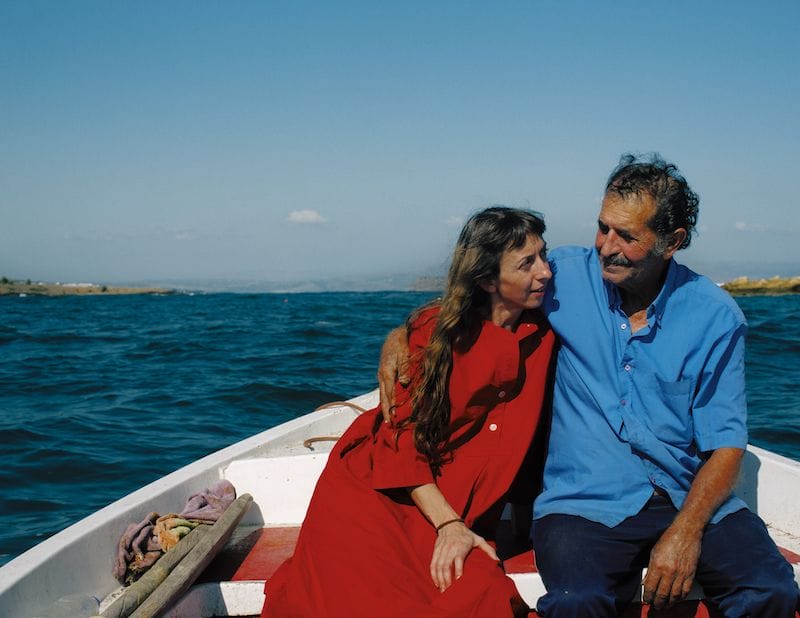
The photographs in the book [shot by Elena Heatherwick] are really stunning.
It was all shot in Crete, which for me was extremely important. We didn’t do one studio shot, there’s nothing done somewhere where it shouldn’t [be done]. The outdoor cooking was actually outdoor cooking and nothing was set up in a funny way – we actually ate every single dish that we cooked because that was the point. They said to me, if you want to speed things up, you can do this and you can spray that, and we can put some ink in that. And my response was, what do you mean put ink in my cuttlefish? What are we going to do with the cuttlefish, put it in the bin?
So it was quite funny because every single dish was made perfectly, seasoned perfectly, delicious. Once it was really good, then I felt like we could shoot it. No one’s going to taste the photograph but we were going to eat the food. We were short on time, doing 16-hour days, and it was very go, go, go. But I was adamant that I wasn’t going to do anything strange with my food.
You write in the introduction that Crete only revealed itself to you after you left. How has your time living abroad in the UK, and traveling more generally, changed your perspective on the island?
I think wherever you grow up, you become too big for the place in a way, especially when you’re young and thirsty and have this need to experiment and see new things.
In Crete, our family was a fisherman’s family, we had a restaurant, we were happy and had loads of friends – basically a really good life. The beach, the mountains, everything was fantastic. But I just wanted to leave. I was absolutely bored of everything. I was reading about art and various other things, and I kept thinking, nothing happens here, and that’s a lie, that’s a false understanding. There are so many things that happen there, but in my eyes, that wasn’t the case.
And I was a teenager, quite a feisty one, so I was determined to leave. I came to the UK to study, which was very much supported by my mom and my dad. I studied psychology at Kent University, and then I did a master’s in forensic psychology, and then I worked in the field and wasn’t happy – I felt like these people were never going to get the help they needed, and that feisty side of me came out again and I said, I’m not doing this.
So I packed my bags and went traveling, which was really strange for my family to understand because Greek teenagers or Greek young people hardly ever did that back then. But I felt it was important – and they were amazing, my trips, very food-orientated as well. We were always chasing markets and small villages. Whether it was wine tasting or cheese tasting, we were really focused on the food side of the areas we were traveling through and that gave me a new perspective.
Then I went back to Crete for a bit – it was only going to be for a few months to see my family because I was away but then I ended up staying for almost three years. I took over the restaurant kitchen and was running it with my brother, which was a really great experience. And I just realized that this place where I was brought up is magical. Plus, having become more interested in food and more professional with my food, my eyes opened differently and I started asking more questions, about the cheese, about the olives, about foraging, about the seasons and the weather. It’s amazing what Cretan nature has to offer in terms of food.
 Morito Hackney Road, where you’re head chef, offers eastern Mediterranean cuisine, including Cretan dishes. What has it been like cooking Cretan food in London? Have you found it difficult to source ingredients?
Morito Hackney Road, where you’re head chef, offers eastern Mediterranean cuisine, including Cretan dishes. What has it been like cooking Cretan food in London? Have you found it difficult to source ingredients?
Cretan food is really simple – it’s not a complicated cuisine at all, but the emphasis is on having really good ingredients. So, for example, what I loved when I was in Crete is that you won’t eat tomatoes in the winter, you won’t eat cucumbers in winter, you won’t eat artichokes in the winter because it’s not the right time.
It’s not about taking an ethical stance. The main decision is this food is not good at this time of year, so I’m not going to eat it. But without knowing it, you end up living a life where you are supporting local farming, growers, small producers and all of these things that have become massively popular now. I don’t think it’s a question of being strict or trying to follow set rules but instead understanding why we’re doing this and following the people who did it without knowing they were doing it.
And it’s the same thing with the ingredients. I love English produce and think the farming here is fantastic. You can buy seasonally in England, though it’s not the same stuff that you’d get in Crete. But it’s about understanding what you have, what you can get.
In terms of what I bring from Crete, it’s some basic things and flavors that I can’t really do without, like the Cretan thyme honey, myzithra, a fresh goat’s curd, and graviera, a sheep’s milk mature cheese, and some really good vinegar that is extremely important for salad dressings and other dishes, barley rusks and olives. That’s about it. Then I work with what I have around me.
What do you hope readers will take away from the book?
I’ve had loads of people, maybe 20 or 25, who have come into Morito and told me that they’ve booked flights to Crete after reading my book. And I don’t know them, they’re strangers. I’m shocked every time it happens. But it’s the same thing: They’ve read or seen something, whether it’s a memory, a flavor, an image, whatever it is, in my book that has made them feel something, has made them feel good. And I think that’s what a recipe should be, a source of inspiration. What you end up making doesn’t have to be one hundred percent the same thing. But just getting the idea in your head or feeling the desire to cook a dish, or even travel to a certain place, I would love my book to do that for people. That’s more than enough for me.
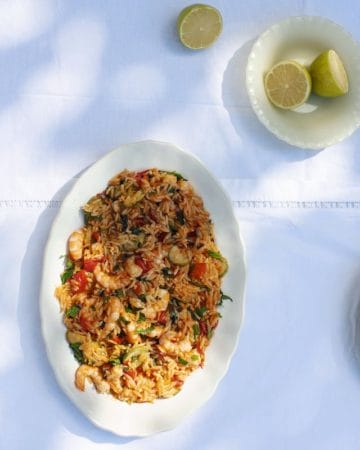 Recipe: Prawns with Ouzo, Orzo and Courgette
Recipe: Prawns with Ouzo, Orzo and Courgette
400g (14oz) fresh prawns, peeled, shells reserved
For the prawn stock
1 tbsp extra virgin olive oil
1 fennel bulb, roughly chopped
1 celery stick, roughly chopped
1 red pepper, roughly chopped
1 white onion, roughly chopped
3 bay leaves
A pinch of saffron
200ml (7fl oz) white wine
50ml (2fl oz) brandy
1 tbsp good-quality butter
200g (7oz) orzo pasta
3 pale green courgettes,
very thinly sliced
500g (1lb 2oz) cherry tomatoes,
quartered
1 tbsp extra virgin olive oil
1/2 tsp crushed fennel seeds
20ml (4 tsp) Greek ouzo
Zest of 1 lemon
Zest of 1 orange
1 handful of mint leaves,
chopped
Serves 4
This dish is delicate and velvety and it’s perfect in the summer when the courgettes are at their best. Make sure you get fresh prawns for this and their size is irrelevant as long as they are so fresh that they are almost still alive. Pick small tender and firm courgettes and if they happen to have flowers attached to them then add these too.
Preheat the oven to 180ºC/350ºF/gas mark 4.
Place the prawn shells on a baking tray and dry out in the oven for about 20–30 minutes. This really helps to concentrate and increase the flavour of the shells.
Heat the oil in a pan and add all the stock ingredients. Toss around and cook gently for 10 minutes with no water. You want to caramelize and sweeten the vegetables. Add the prawn shells to the pan and cover with water. Simmer gently for 30 minutes. Turn the heat off and allow the stock to rest for a while before passing it through a sieve and reserving the liquid.
Heat the butter in a pan and add the orzo. Stir gently for a couple of minutes until it’s all shiny and coated in the butter. Add half the courgettes and all the tomatoes together with the oil and fennel seeds. Increase the heat and start adding the prawn stock in batches – you may not need to use all of it. The orzo will take about 15 minutes to cook. Just before it’s ready, add the remaining courgettes, ouzo and lemon and
orange zest. Finally add the prawns and check the seasoning. Cook until the prawns turn pink. You want this dish to be loose and juicy – a bit like a risotto. Serve with the fresh mint scattered over the top.
If you have any prawn stock left over, freeze it to use another time.
The recipe and all the photos were taken from “Aegean: Recipes from the Mountains to the Sea” by Marianna Leivaditaki. Published by Kyle Books. Photography: Elena Heatherwick. Click here to purchase your copy.
 May 4, 2021 CB Book Club
May 4, 2021 CB Book Club
We spoke to travel writer and cook Yasmin Khan about her latest cookbook, Ripe Figs: […] Posted in Athens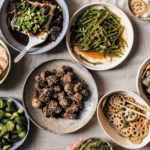 March 16, 2021 CB Book Club
March 16, 2021 CB Book Club
We recently spoke to Betty Liu about her new cookbook, My Shanghai (Harper Design, March […] Posted in Shanghai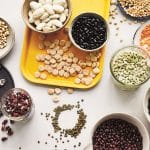 March 3, 2022 Recipe
March 3, 2022 Recipe
We spoke to Joe Yonan, the James Beard Award-winning food and dining editor of The […] Posted in Mexico City
Published on February 03, 2021
Related stories
May 4, 2021
Athens | By Culinary Backstreets
AthensWe spoke to travel writer and cook Yasmin Khan about her latest cookbook, Ripe Figs: Recipes and Stories from Turkey, Greece, and Cyprus (W. W. Norton & Company, May 4, 2021). Author of two cookbooks, The Saffron Tales and Zaitoun, Yasmin turns her focus to the Eastern Mediterranean in Ripe Figs. Using the kitchen table…
March 16, 2021
Shanghai | By Culinary Backstreets
ShanghaiWe recently spoke to Betty Liu about her new cookbook, My Shanghai (Harper Design, March 2021), which spotlights the home-style Shanghainese food she grew up eating. Organized by season, this handsome volume takes readers through a year in the Shanghai culinary calendar, with flavorful, deeply personal recipes that are daily fare for Betty and her…
March 3, 2022
Mexico City | By Culinary Backstreets
Mexico CityWe spoke to Joe Yonan, the James Beard Award-winning food and dining editor of The Washington Post, about his cookbook, Cool Beans: The Ultimate Guide to the World's Most Versatile Plant-Based Protein (Ten Speed Press, February 2020). And he provided us with a recipe for his garlicky great northern beans and broccoli rabe over toast (scroll…







































